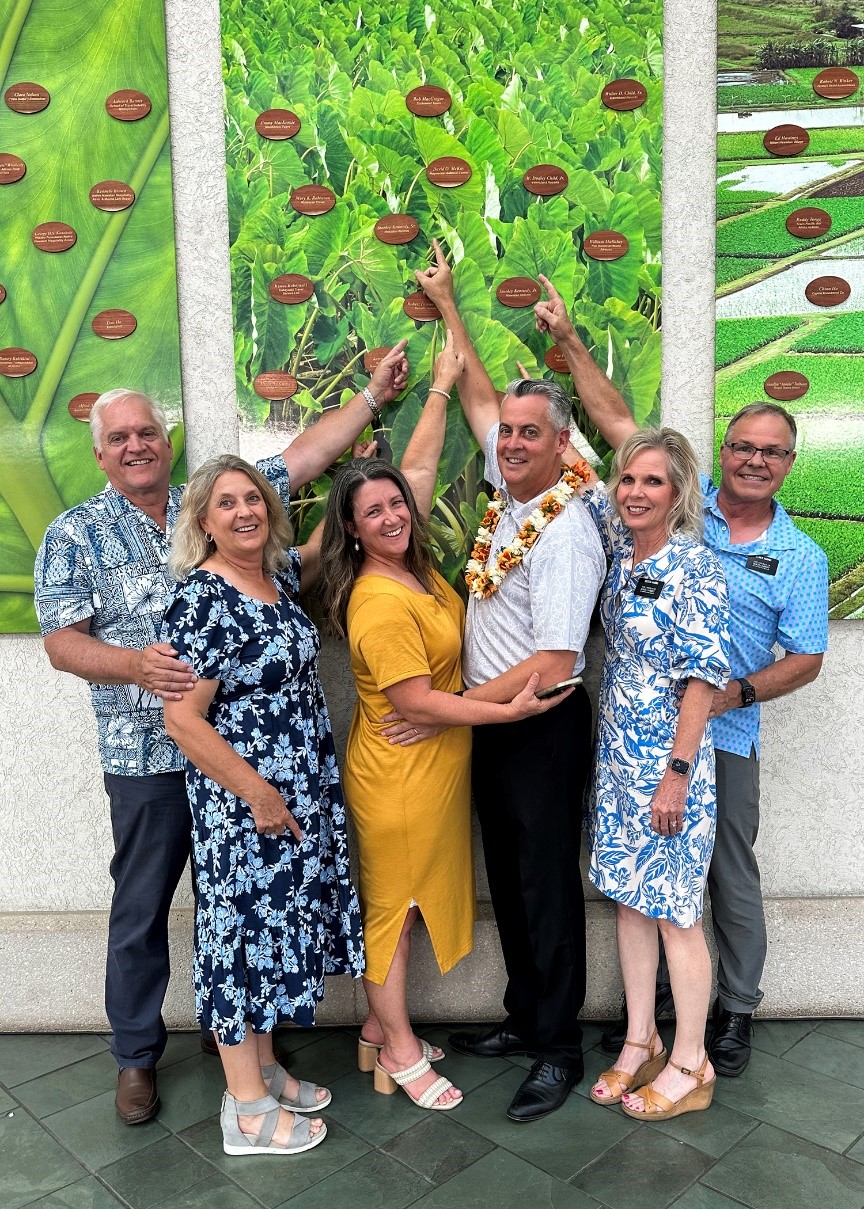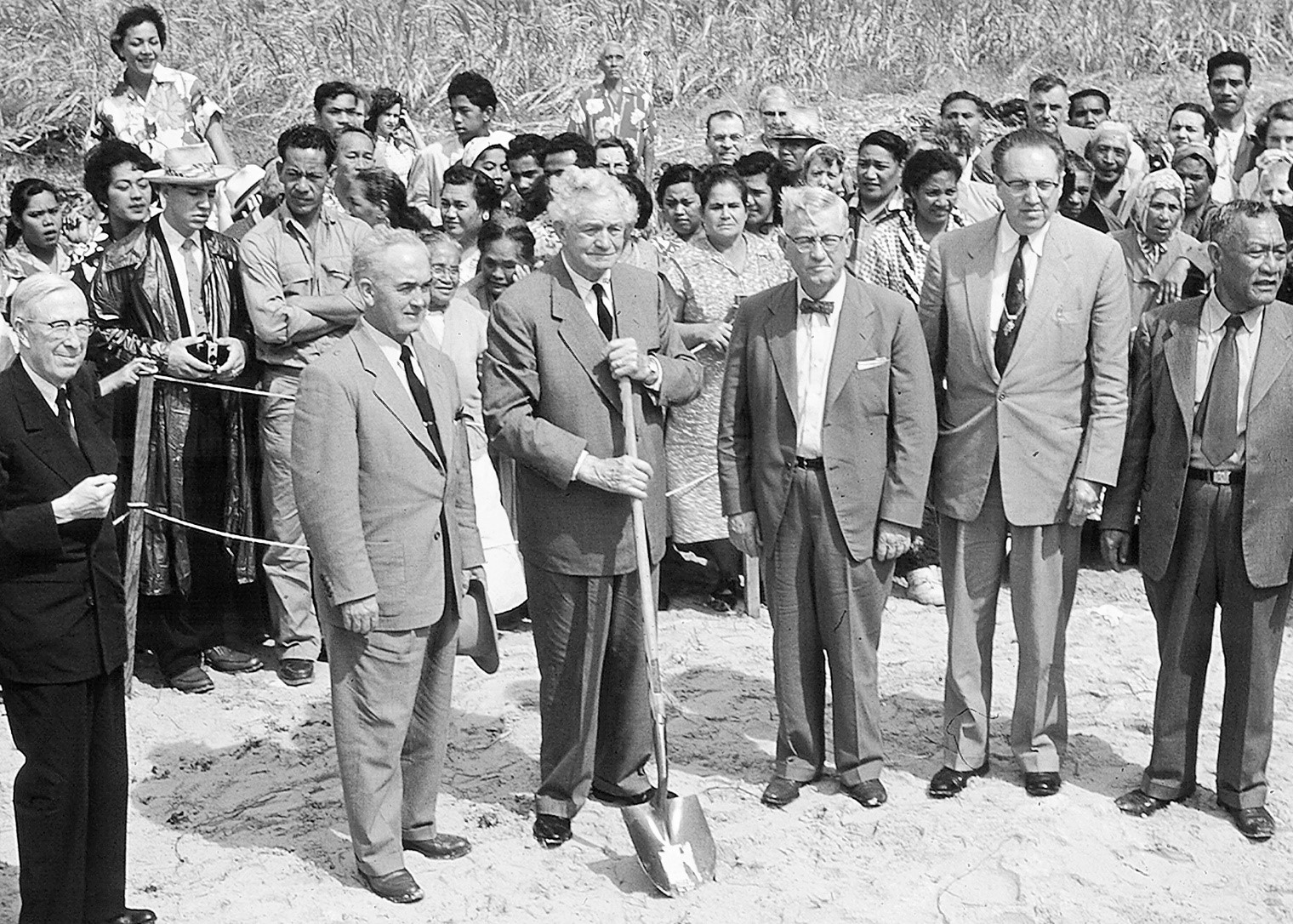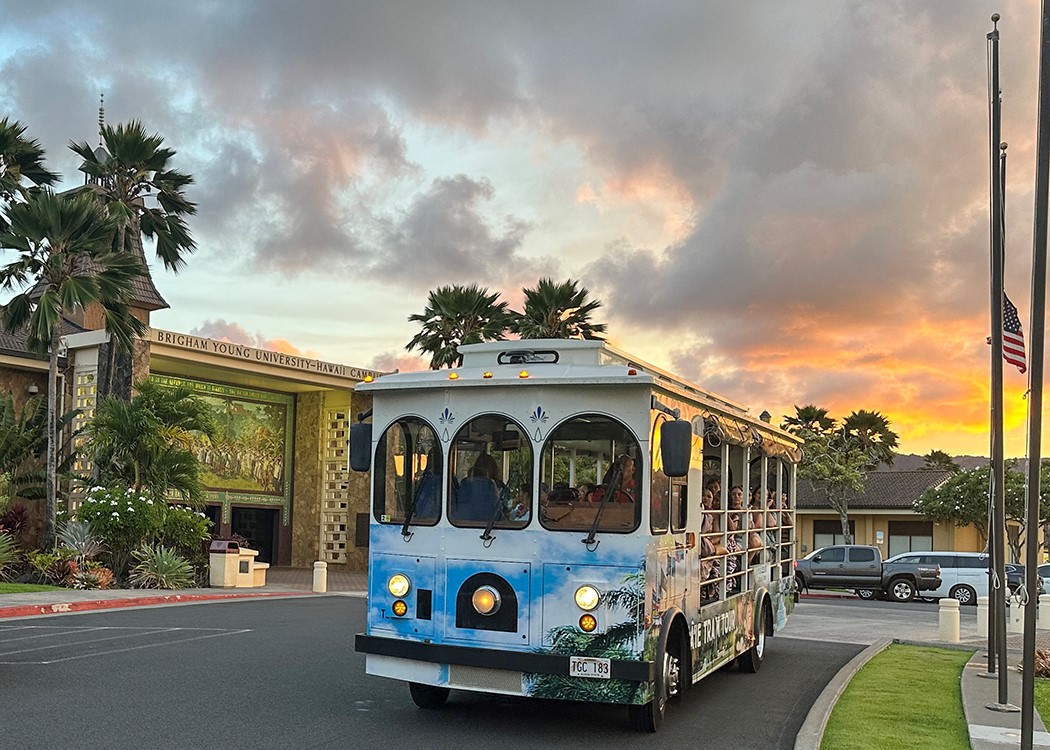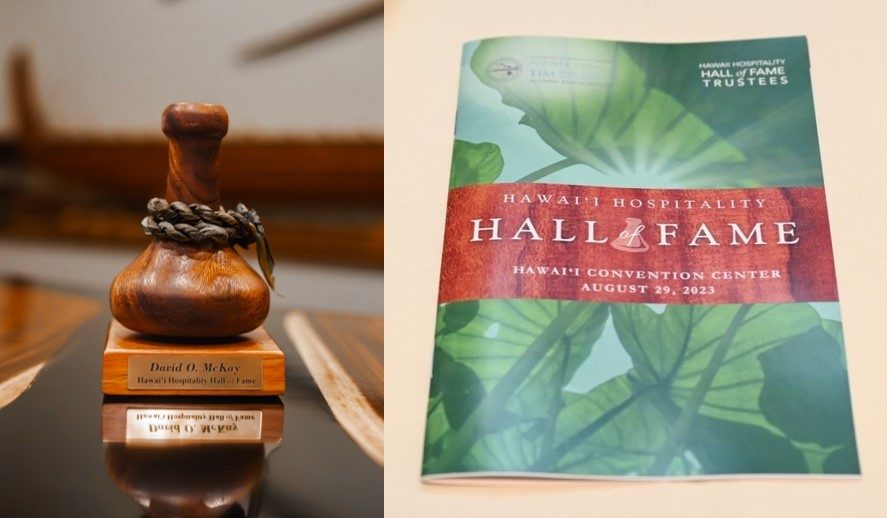Recognizing the vision of David O. McKay
The School of Travel Industry Management at the University of Hawaiʻi at Mānoa’s Shidler College of Business inducted the founder of the Polynesian Cultural Center and Brigham Young University–Hawaiʻi into its Hawaiʻi Hospitality Hall of Fame. This event was held on August 29, 2023, at the Hawaii State Convention Center in Waikīkī.
Lee-Ann Choy, president of the TIM alumni association which oversees the Hawaiʻi Hospitality Hall of Fame, explained that McKay, a former educator who served as ninth worldwide president of The Church of Jesus Christ of Latter-day Saints from 1951 until 1970. He is now listed among almost 50 others on a special wall. “We are building a wall of the history of tourism in Hawaiʻi, of the foundation these pioneers set for us. Only deceased inductees are honored.”
Other inductees include hoteliers, restaurateurs, educators, tour and transportation executives, entertainers, cultural experts, and more.

Polynesian Cultural Center chief marketing officer and vice president Eric Workman (center, with his wife, Ann Chase Workman) and several Center volunteers attend President McKay’s induction ceremony into the Hawaii Hospitality Hall of Fame in Waikīkī.
We have all benefitted from McKay’s vision
The Cultural Center’s chief marketing officer, Vice President Eric Workman, and a small group of others represented President McKay at the hall of fame ceremony and banquet. “We were so pleased to hear the UH travel industry management alumni honored President McKay,” Workman said.
“There’s no question in any of our minds that he ‘championed’ the Church College of Hawaii, and subsequently the Polynesian Cultural Center, over many years in the history of Lāʻie. We have all benefited from his vision and aloha for the Pacific and Asian people.”

President McKay (holding the shovel) breaks ground for the new Church College of Hawaiʻi on February 12, 1955. Classes began in temporary facilities that Fall. President McKay authorized the Polynesian Cultural Center to open in 1963 to help provide jobs for students — Photo by Elder Lee Cantwell, courtesy of BYU–Hawaiʻi Archives.
McKay: The Back-Story
In late 1920 Church leaders dispatched Elder McKay on a fact-finding tour of its Pacific islands and Asia missions and school systems, with the possibility of going on to Africa and Europe. During that almost-62,000-mile journey, Elder McKay also visited China, Japan, Tahiti, Fiji, Samoa, Tonga, New Zealand, Australia, Indonesia, India, Palestine (i.e., Israel), Egypt, Armenia, and Europe, arriving home on Christmas Eve 1921.
The early days of McKay’s journey brought him to Hawaiʻi. Here he witnessed Hawaiian and immigrant school children at the small mission school in Lāʻie raise the U.S. flag on February 7, 1921. This sight ultimately inspired him when he became president of the Church in 1951 to found schools in the South Pacific, and the Church College of Hawaii in 1955 (renamed BYU–Hawaii in 1974). Perhaps most uniquely, it opened the door to the establishment of the adjacent Polynesian Cultural Center in 1963 as a way to help more students from the Pacific islands and Asian Rim fund their college education.

The Polynesian Cultural Center optional free Lāʻie Tour tram completes its stop at the BYU–Hawaii David O. McKay building. The tour has been running since 1972. — Photo by Mike Foley.
A vision for Lāʻie
At the CCH groundbreaking ceremony, President McKay predicted “millions of people” would eventually come to Lāʻie. At the time the total number of annual visitors to Hawaiʻi was only slightly over 110,000. Since then, however, tourism has become Hawaiʻi’s leading industry. To date, almost 50 million visitors have experienced the Polynesian Cultural Center, making it one of Hawaiʻi’s most popular attractions.
While Hawaiʻi tourism is still recovering from economic impacts of the COVID-19 pandemic, BYU–Hawaii currently enrolls about 2,800 students from over 70 different countries. The Center employs about 800 of those students in a unique, joint work-study program.

Story and photos by Mike Foley, who has been associated with the Polynesian Cultural Center for over 50 years. He had a long career in marketing communications, PR, journalism and university education before becoming a full-time freelance writer and digital media specialist in 2002. Foley learned to speak fluent Samoan as a Latter-day Saint missionary before moving to Laie in 1967, and he still does. He has traveled extensively over the years throughout Polynesia, other Pacific islands and Asia. Though nearly retired now, Foley continues to contribute to PCC and a select few other media. Almost 50 years ago he married one of Aunty Sally’s hula dancers.


Recent Comments